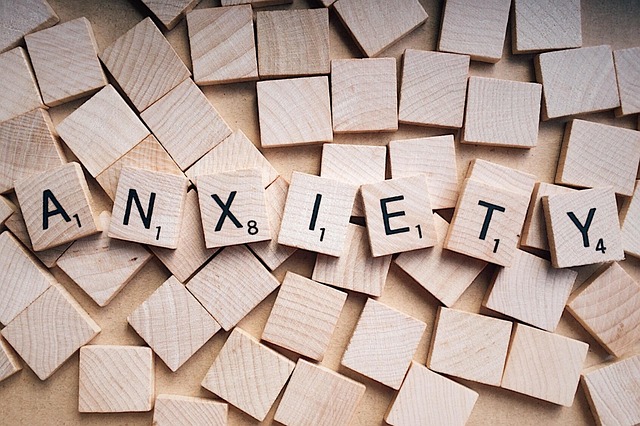Arvada Adolescent and Teen Therapy emphasizes understanding and addressing social, psychological, and biological factors driving adolescent substance abuse. By targeting risk factors like low self-esteem and peer pressure, and providing proactive interventions focusing on education and building resilience through CBT, they empower teens to make healthier choices. Early identification of struggling youth, tailored therapy, community support, and mental health advocacy create an environment where adolescents can receive crucial coping mechanisms before turning to substances, reducing vulnerability significantly.
“In addressing substance abuse among adolescents and teens, a comprehensive approach is paramount. This article explores effective risk reduction strategies tailored to this vulnerable demographic, focusing on Arvada Adolescent and Teen Therapy’s expertise. We delve into understanding underlying risk factors, emphasizing early intervention through sign identification and access to help. Additionally, evidence-based therapies, resilient coping mechanisms, community support, education, and policy changes are discussed as vital components for a holistic approach to prevention and sustained well-being.”
- Understanding the Risk Factors for Substance Abuse in Adolescents and Teens
- Early Intervention: Identifying Signs and Seeking Help
- Evidence-Based Therapies for Prevention and Recovery
- Building Resilient Coping Mechanisms and Alternative Activities
- Community Support, Education, and Policy Changes for Sustained Well-being
Understanding the Risk Factors for Substance Abuse in Adolescents and Teens

Understanding the risk factors behind substance abuse among adolescents and teens is a crucial first step in developing effective prevention strategies. According to research, various social, psychological, and biological elements contribute to a young person’s vulnerability to drug and alcohol misuse. Many Arvada adolescent and teen therapy programs have identified key risk factors such as low self-esteem, peer pressure, and access to substances as primary drivers of substance abuse in this demographic.
Self-esteem improvement strategies can play a significant role in mitigating these risks. Public awareness campaigns that focus on educating young people about the potential consequences of substance abuse and promote positive coping mechanisms for stress management are also valuable tools. By addressing these risk factors proactively, communities can empower adolescents to make healthier choices and reduce their likelihood of engaging in substance abuse behaviors.
Early Intervention: Identifying Signs and Seeking Help

Early intervention is a vital strategy in the fight against substance abuse, particularly among adolescents and teens. The Arvada Adolescent and Teen Therapy centers play a crucial role in identifying the subtle signs of struggling youth. Parents, caregivers, and peers can be the eyes and ears in recognizing behavioral changes that may indicate an underlying problem. Common indicators include sudden changes in mood, withdrawal from social activities, performance issues at school, or unusual secrecy.
When concerns arise, seeking professional help is essential. Mental health professionals conduct comprehensive risk assessments to evaluate an individual’s mental health status and potential substance abuse risks. This process involves a detailed conversation about personal experiences, family history, and current challenges, followed by tailored strategies to build resilience and manage anxiety, which are often underlying factors in substance abuse.
Evidence-Based Therapies for Prevention and Recovery

Evidence-based therapies play a pivotal role in both preventing substance abuse among adolescents and teens, as well as supporting recovery. Programs like Arvada Adolescent and Teen Therapy utilize strategies such as cognitive-behavioral therapy (CBT), which helps individuals identify and change negative thought patterns and behaviors associated with drug use. By focusing on mindfulness meditation, CBT encourages present-moment awareness and emotional regulation skills crucial for managing cravings and stress.
Additionally, mental health policy analysis and advocacy are essential components of effective prevention strategies. Well-designed Mental Health Education Programs that teach about the risks of substance abuse and promote healthy coping mechanisms can significantly reduce vulnerability among young people. These programs, combined with accessible mental health services, foster an environment where adolescents and teens can receive early intervention and support before turning to substances as a means of coping.
Building Resilient Coping Mechanisms and Alternative Activities

Building resilient coping mechanisms is a powerful strategy to reduce risks associated with substance abuse among adolescents and teens. This involves equipping young individuals with healthy ways to manage stress, emotions, and challenging situations. Through Arvada Adolescent and Teen Therapy, professionals guide youth in developing self-awareness exercises that promote understanding of their triggers and emotional responses. By fostering self-care routine development for better mental health, teens learn to prioritize their well-being, enhancing their ability to resist substance abuse when faced with peer pressure or difficult circumstances.
Alternative activities play a significant role in this process. Engaging in hobbies, sports, art, or community service can divert attention from substance abuse and foster a sense of belonging and purpose. Encouraging teens to explore and excel in these areas not only provides healthy outlets but also builds confidence and self-esteem. Communication strategies taught through therapy sessions empower adolescents to express their needs, set boundaries, and make informed decisions, further reducing the risk of substance abuse.
Community Support, Education, and Policy Changes for Sustained Well-being

Community support plays a pivotal role in sustaining well-being and reducing substance abuse among adolescents and teens. Programs like Arvada Adolescent and Teen Therapy offer specialized services tailored to address the unique challenges faced by this demographic. These initiatives foster a sense of belonging and provide valuable coping skills development, ensuring individuals have the resources needed to navigate life’s stressors without resorting to harmful substances.
Education is another powerful tool in the fight against substance abuse. Implementing evidence-based educational programs in schools can equip young people with knowledge about the risks and consequences of drug use. Coupled with mental health policy analysis and advocacy, which promote evidence-informed practices, these efforts contribute to a comprehensive strategy. Encouraging mental wellness journaling exercises can also help individuals process their emotions and experiences, further supporting their overall mental health and resilience.
Substance abuse among adolescents and teens is a complex issue, but with comprehensive risk reduction strategies, it can be effectively addressed. By understanding the unique risk factors faced by young individuals, implementing early intervention programs, utilizing evidence-based therapies, fostering resilient coping mechanisms, and advocating for supportive community policies, we can create a safer and healthier environment for Arvada’s adolescents and teens. Accessing specialized services like those offered at local Arvada Adolescent and Teen Therapy centers plays a crucial role in this effort, providing much-needed support and resources for both affected individuals and their families. Together, through education, prevention, and community collaboration, we can pave the way for a brighter future free from substance abuse.














